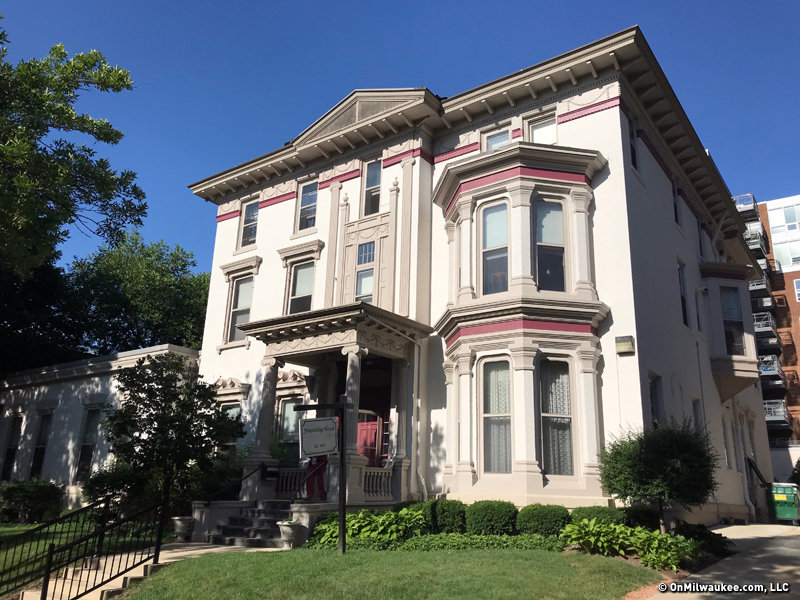We all change as we grow and by the time we reach the retirement window (if we’re lucky), we have adapted and grown and maybe even become almost unrecognizable to anyone who knew us in our earliest days.
The house that George W. Peckham built at 1029 N. Marshall St. in 1855 doesn’t appear to be anywhere near retirement – thankfully – but it has most certainly undergone so many alterations that, were he to magically reappear, Peckham himself might not recognize it.
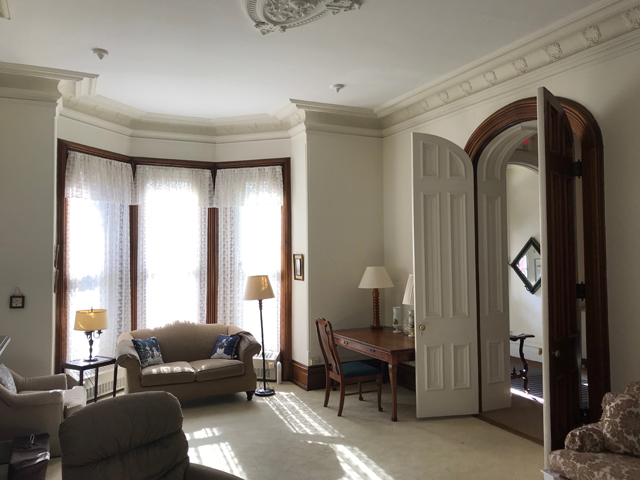
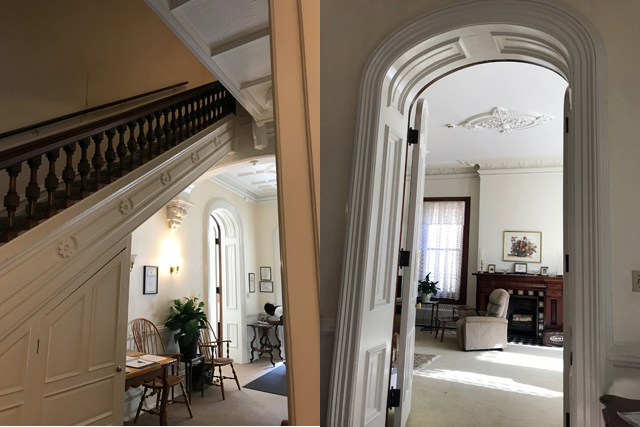
Built before the Civil War, the house – home to The Friendship House since 1970 – is among the oldest in the city, and it was designed by the firm of Mygatt and Schmidtner, led by two of the most important early architects in the city, George Mygatt and Leonard Schmidtner.
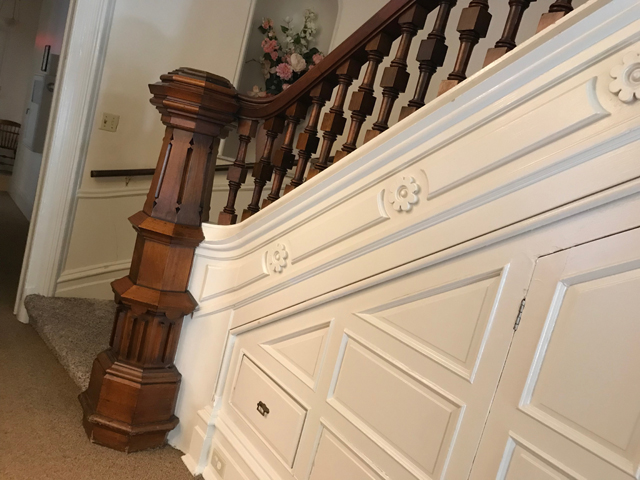
As Russell Zimmermann pointed out in his landmark "Heritage Guidebook:"
"Begun in 1855 as a relatively modest Italianate house, this large, painted CCB structure has been rebuilt and remodeled seven times. When new, the house was much smaller and only two stories tall, but later additions included raising the roof six feet to create a third floor. Although neo-classical details dominate, close inspection will reveal eight different window styles, a fact which corroborates its many changes."
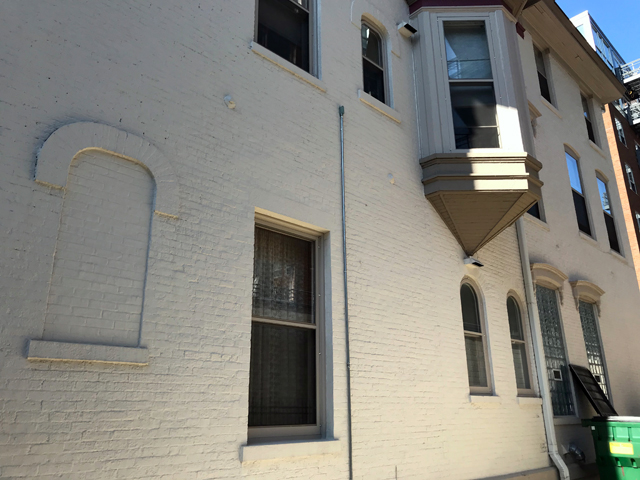
If you peek at the north wall of the building, you’ll notice at least five of those window styles even today (see above). And a view from the south clearly shows three of the phases (see below).

The Wisconsin Historical Society’s architectural inventory points out that the house is one of the few surviving examples of works by Mygatt and Schmidtner.
"This is an outstanding example of pre-Civil War Italianate residences," the site notes. "Its form is characteristic of the period with its square blockishness, projecting center gabled pavilion, and double stacked bays. This is in sharp contrast to the later asymmetrical, more flamboyant Victorian Italianate. It is in superb condition and exhibits original form and design."
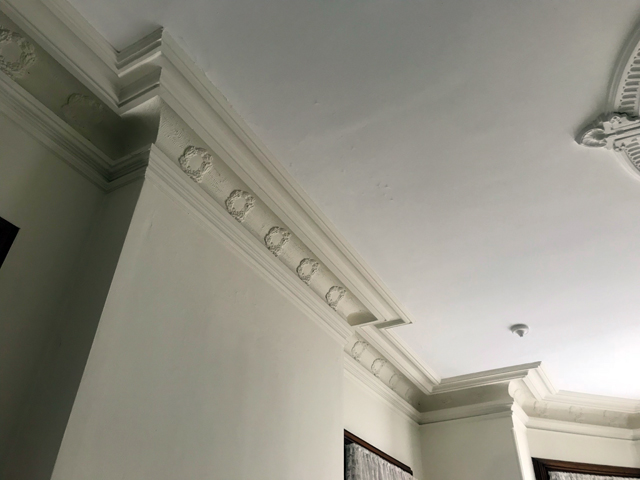
George Peckham
Born in 1795 in Rhode Island – a direct descendant of John Peckham, who settled Newport – Peckham practiced law in Albany before moving rather late in life to Milwaukee in 1853. Initially, he and his family (his wife and two children) lived on Cass Street between Kilbourn and Wells.
But then he decided to build a block closer to the city’s northern edge – which at the time was Juneau Avenue – and it was there that he built his relatively modest 28x60 home, at a projected cost of $6,000.
According to Zimmermann, by 1865, when he was an empty nester, Peckham moved to a new house on Wisconsin Avenue and his daughter Isabella and her husband Benjamin Kurtz Miller, who was also a lawyer, lived in the Marshall Street house, which appears to have first been expanded, most likely with the large wing added to the west end of the north side.
By the time the next addition was made, to the east of the previous addition – the design of this expansion, which included a library and the second-story bay, as well as a south-facing veranda on the other side suggests mid-1870s, Zimmermann says – the elder Peckham was found drowned in the Milwaukee River near the Wells Street Bridge.
Though some said the 1873 misadventure was suicide, Peckham’s family preferred to believe that he had suffered from one of his regular bouts of vertigo and fell in.
It should be noted that Peckham’s son, George Jr., lived in the house for 10 years, and he is an important figure in 19th century Milwaukee.
Born while his father was working as a lawyer in Albany in 1845, George Williams Peckham Jr., put off his college education to volunteer to fight in the Civil War, in which he served as an officer.
Afterward, he studied at Antioch College and Albany Law School before earning his medical degree from the University of Michigan the same year his father died. He signed on as a teacher in the Milwaukee public high school, where he taught biology. Peckham was named principal of the school in 1884 and served in that role until he became MPS superintendent in 1892.
Upon his resignation as superintendent in 1896, he took on the role of city library, and it was during his tenure that the gorgeous Ferry & Clas-designed Central Library that we still enjoy today was built.
Also a trustee of the Milwaukee Public Museum, upon his death in 1914, Peckham’s collections of spiders and other specimens were added to the collection.
Of the younger Peckham, the MPS history book, "Our Roots Grow Deep" quoted the Milwaukee Journal as saying, "Nobody can spend 10 minutes with him without saying that he is an unusual man, a good thinker, a close observer and companionable in the highest degree. His pupils loved him ... Dr. Peckham was a wide-awake, practical, straight-from-the-shoulder man, an educator of long experience ... a gentleman of the best type."
Meanwhile, back on Marshall Street, Miller raised the roof of the home by six feet and added a third story in 1893, also attaching the neoclassical decoration to the facade to complement the new classical cornice and a front porch supported by Ionic columns. This work, Zimmermann says, "all but erased the Victorian lines of the house."
When Miller died five years later, his and Isabella’s son – B.K. Miller Jr. – lived in the home for just over a decade and then his brother William moved in with his family for about 13 years.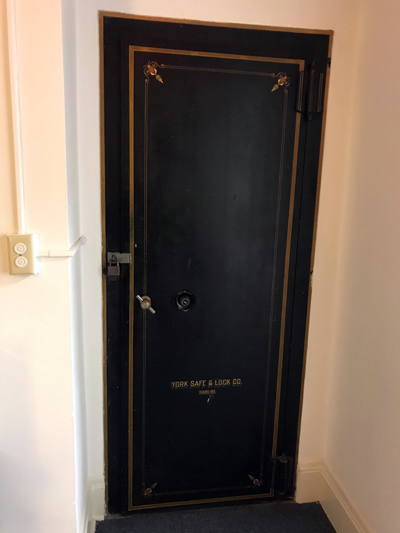
In 1922, the house was sold to the Wisconsin Public Service Corp., which put a four-story addition (with a vault on each floor) on the back, and used the expanded place for offices. In 1930, another addition – this one 18x20 feet – was put on the southwest corner.
In 1970, Friendship House got the property in a swap for its previous home on Van Buren Street, so the latter could be razed to make way for the construction of the U.S. Bank Building (then the First Wisconsin Building).
Friendship House added and enclosed stairwell to the northwest corner of the building and a single story addition to the south side.

Friendship House
Friendship House, a privately funded nonprofit that helps homeless women, fathers and children transition to traditional housing, is nearly as old as the home it has inhabited for decades now.
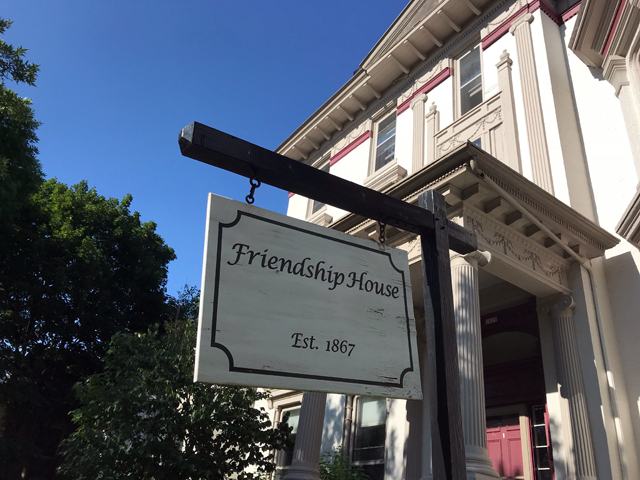
"Friendship House started off as just providing services to women and children who are homeless," says Donna Rongholt-Migan, who is executive director of the Cathedral Center, which operates the program.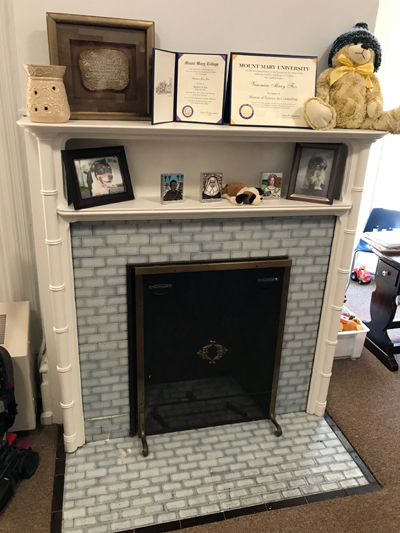
"The story that I heard is that the first resident was a woman who immigrated on a boat with her husband and her infant child, and both of them died on the way over. So she was left with a trunk of belongings and then was swindled of the little bit of cash she had left, but she had a sewing machine. So they let her stay at the Friendship House, which started in somebody's residence, while she took in sewing and earned some money and could move out and about on her own."
According to Rongholt-Migan, Friendship House operated independently until relatively recently, when it began contracting with other nonprofits to provide the services. When it was in danger of shutting down, a number of other area nonprofits stepped forward to make sure that didn't happen.
"They reached out to the leadership of women-serving organizations around the city, and they all unanimously, without consulting with one another, said, 'Absolutely not, you can't close down.' Transitional living programs are critical, and the only difference is that public sources won't fund it anymore," says Rongholt-Migan.
"Because they have private resources, we don't have to look for public funding for this. So it's a real gift to the community. They reached out to me, and they came to The Cathedral Center, and then they started to contract with us for services about six months later."
Now, there are eight rooms plus a room that can house four singles and most stay a few months, though because it is flexible housing, not an emergency shelter, guests can stay up to two years, though that's never happened.
"The folks who come here are coming from shelters," says Rongholt-Migan. "Having operated the shelter for the last 15 years, I'm aware that there's nothing else. The transitional housings are all gone in Milwaukee, and so sometimes people just need more than the three months they can get at an emergency shelter. We take folks who have already been at emergency shelters and just need a little bit more time."

At Friendship House, there is a room where a parent who is trying to reunite with children in foster care can stay, and there is a playroom for children. There's a computer lab and there's a kitchen where guests are expected to cook their own meals.
Guests are also expected to lend a hand by doing a daily chore in the common areas. There are counseling services and employment assistance services, too. Really, the good work that the folks at Friendship House does is too multifaceted to capture here.
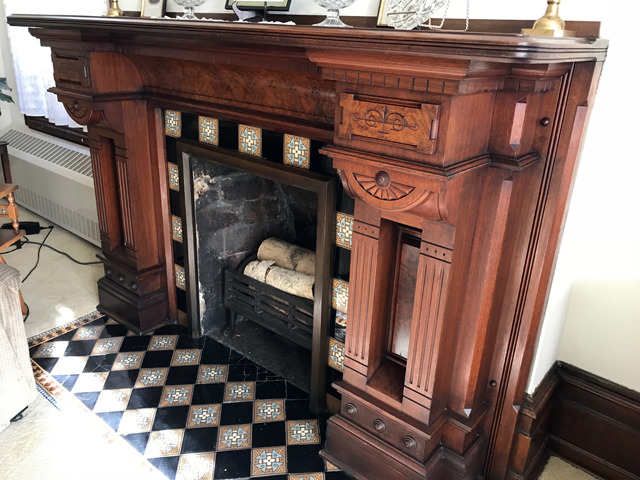
And all of it happens in what is most definitely a historic Milwaukee building, and one with gorgeous details, from the soaring interior doors, to the stunning fireplaces in many rooms, to the stalwart newel post anchoring the bottom of a regal staircase to ornate plasterwork and moldings (both pictured below). It looks and feels every bit like a home.
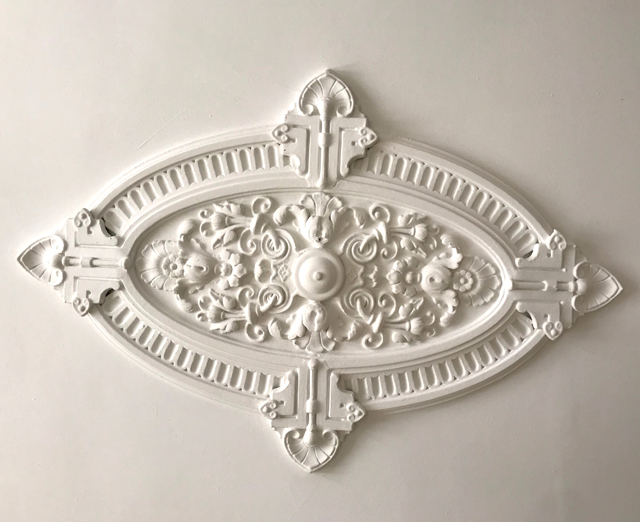

"Friendship House owns the building outright," says Rongholt-Migan, "so the maintenance is really the only expense. There are always building issues in a place like this, but the Friendship House board are really proud of the building. They want to maintain it well and are really respectful of the folks that we're serving, so they are very responsive."
The Pathway Home
Each year, the Cathedral Center hosts The Pathway Home: A Celebration of Ending Homelessness and this year's event is Nov. 8, from 5 until 8 p.m. in Atrium of Cathedral of St. John the Evangelist, 831 N. Van Buren St.
Cathedral Center is still seeking sponsors for this key fundraiser which helps make the important work in Peckham's former home happen. If you're interested, please contact Amy Rowell.
Tickets are available here.
Born in Brooklyn, N.Y., where he lived until he was 17, Bobby received his BA-Mass Communications from UWM in 1989 and has lived in Walker's Point, Bay View, Enderis Park, South Milwaukee and on the East Side.
He has published three non-fiction books in Italy – including one about an event in Milwaukee history, which was published in the U.S. in autumn 2010. Four more books, all about Milwaukee, have been published by The History Press.
With his most recent band, The Yell Leaders, Bobby released four LPs and had a songs featured in episodes of TV's "Party of Five" and "Dawson's Creek," and films in Japan, South America and the U.S. The Yell Leaders were named the best unsigned band in their region by VH-1 as part of its Rock Across America 1998 Tour. Most recently, the band contributed tracks to a UK vinyl/CD tribute to the Redskins and collaborated on a track with Italian novelist Enrico Remmert.
He's produced three installments of the "OMCD" series of local music compilations for OnMilwaukee.com and in 2007 produced a CD of Italian music and poetry.
In 2005, he was awarded the City of Asti's (Italy) Journalism Prize for his work focusing on that area. He has also won awards from the Milwaukee Press Club.
He has be heard on 88Nine Radio Milwaukee talking about his "Urban Spelunking" series of stories, in that station's most popular podcast.

